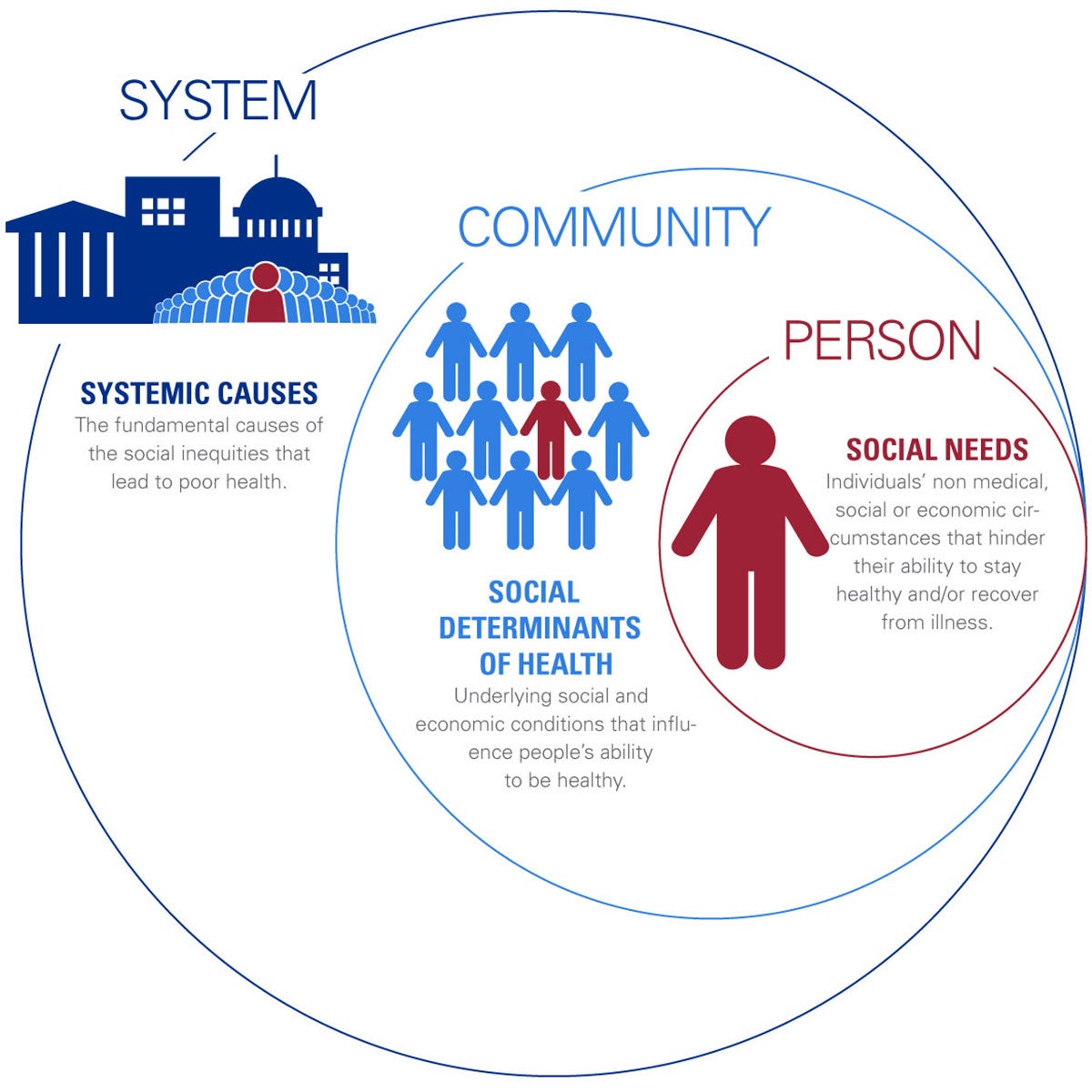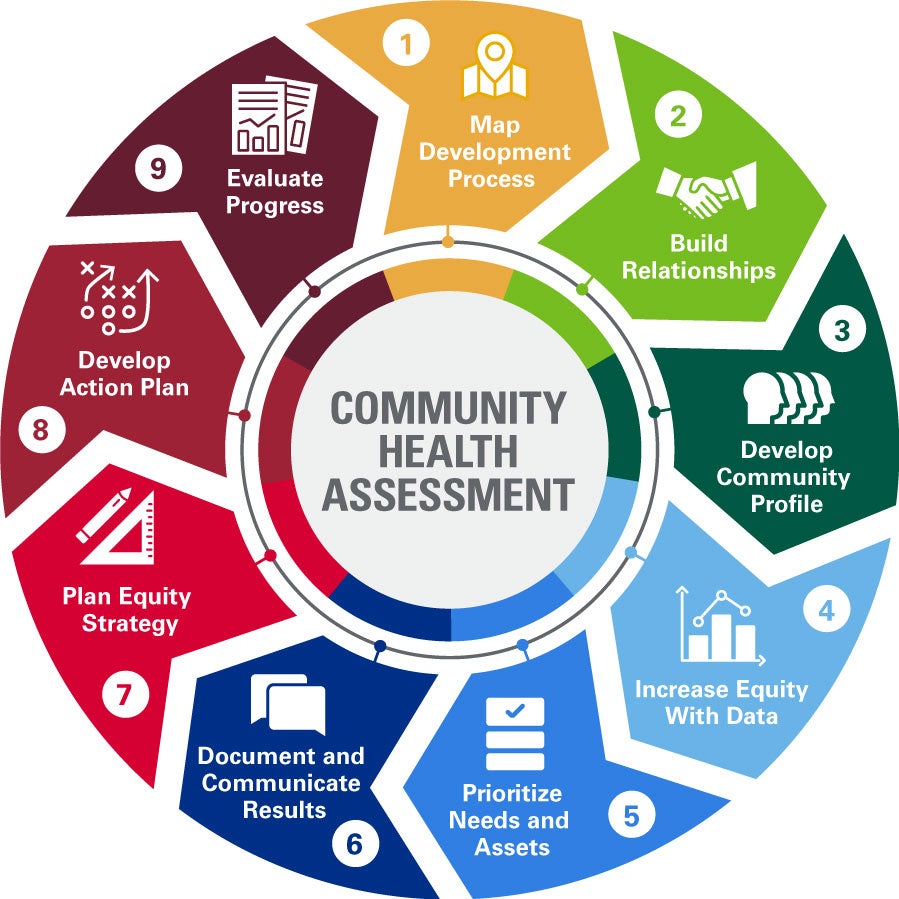Explore the Toolkit Steps
Community Health Assessment Toolkit
Welcome to the American Hospital Association’s Community Health Assessment Toolkit. As in earlier releases, this updated toolkit provides a nine-step guide for hospitals and health systems to collaborate with their communities and strategic partners to conduct a community health assessment (CHA) and meet community health needs assessment (CHNA) requirements.
Given the unequivocal call to accelerate health equity for all communities, this toolkit reflects the understanding that while CHNA reporting may be required only for nonprofit hospitals and health systems, the CHA process is one that all hospitals can undertake.
About This Update
The COVID-19 pandemic — tied to a renewed, deepened national focus on racial and social justice — has led many hospitals and health systems to recommit to the goal of achieving equitable communities. To reflect this commitment and the evolution of CHA practices, the AHA has revised the CHA Toolkit to highlight intentional health equity focus at every juncture, especially in community engagement and data practices.
As you explore this resource, you will easily grasp the theme of listening at every step of the way — from the initial planning of your approach to inviting community partners old and new to the table, from choosing what data sets to collect and weigh and prioritizing identified community needs to collaboratively planning your implementation strategies. Here at the AHA, we have been listening too. This toolkit has been redeveloped with the input and guidance of a national panel of expert practitioners in community health assessment and collaboration.
Hospitals reach out to their community partners to inform the CHA. With a common commitment to health equity at the core, a well-executed CHA can be foundational to better health outcomes for individuals; stronger, more enduring relationships between hospitals and community groups; and healthier, more vibrant communities for all.
With that in mind, this toolkit presumes that most, if not all, organizations using this guide will have previous CHA experience. We encourage those responsible for the CHA to deeply engage with this experience and build on what has been done in the past but not limit yourselves to past practices. The CHA is about continuously updating shared understanding of a community’s assets and needs. The process will evolve as experience accumulates.
Intentionality Leads to Better CHA Results
Health care professionals have long known the impact of social needs on the health of individuals and communities. In recent years, consensus has emerged that these needs are best addressed through collaboration. Aiming for this goal, cross-sector and multisector groups have increasingly coordinated activities to address these social drivers of health (SDOH).
As these efforts have gained momentum, the importance of an agreed-upon taxonomy has became apparent. The American Hospital Association responded by creating the Societal Factors That Influence Health Framework (Figure 1), which differentiates among the social needs of individuals, community-level SDOH and the systemic causes that contribute to health inequities. The importance of developing a process that is both intentional and explicit about the central role of equity in the CHA cannot be overstated. CHAs provide an undeniable opportunity to accelerate health equity efforts by working with the community to address policies and practices that create access, resources and opportunities to promote health and remove barriers for all people. The resulting CHA strategic document can yield synergistic results when aligned with system-level planning on diversity, equity, inclusion and justice; population health; emergency preparedness; and organizational strategy.

Tips
Make equity foundational throughout the CHA process.
- To work toward health equity through the CHA, health care professionals and partners also work toward mutual understanding of their community’s residents and needs, engaging everyone equitably, and then shifting their focus to jointly explore root causes of health inequities.
- A well-executed and thorough CHA process is intentional in its collaboration and provides a roadmap to near-term and progressive community health care improvement, strengthening relationships along the way that lead to enduring results.
- It is crucial to keep in mind that health equity is not something to superimpose on a CHA process or any subsequent implementation plan.
- Health equity must be foundational, interwoven into planning and intrinsic to metrics. It must be organic — never an overlay.
Community Engagement Spectrum


